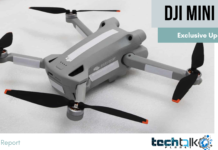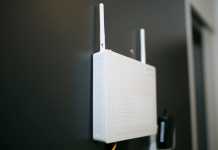
The Mini 3 Pro is DJI’s greatest sub-250-gram drone to date thanks to its better battery life, intelligent features, and totally revamped image and visual sensor technology. However, there have been some concerns about the drone’s overheating as it has begun to reach more and more customers. Here is why it’s taking place:
Smartphones frequently experience a little temperature increase as a result of the battery having to work too hard to keep up with all the running processes. However, the Mini 3 Pro’s overheating problem has a pretty unexpected beginning: drone rules.
Every tiny part that goes into the drone is important if you want to build a sturdy camera drone that weighs 249 grammes or less and can be regarded as safe in most countries.
The team had to change the internal cooling fan in Mini 3 Pro as a trade-off to lighten the overall load. Other benefits included a reduction in power usage and an improvement in battery life due to the absence of a built-in fan.
The small man still needed to chill off. In order to allow the drone to utilise the wind created by the propellers to disperse the heat produced during flight, the team placed a heat sink on the bottom of the craft.
When the drone was in flight, this new solution performed flawlessly. But after some time, heat dissipation began to suffer when the Mini 3 Pro was left in standby mode on a flat surface (such as the floor or a desk).
DJI fitted the drone with a temperature control mechanism as a workaround. The technology made sure that when the drone was in standby mode, it could gauge the temperature and determine whether or not to shut down automatically to avoid overheating.
The Mini 3 Pro was then tested by DJI in an indoor setting with a 25°C ambient temperature in order to establish a typical standby time for the drone while maintained in a stationary position. To avoid overheating, the drone could turn itself off automatically if this period is surpassed.
“22 minutes in standby mode when on the ground.19 minutes while upgrading firmware (sufficient for three upgrades)About 35 minutes when using QuickTransfer right away after turning it on.After landing, using QuickTransfer, it takes roughly 35 minutes.
DJI determined that this amount of time was adequate for the majority of activities, although some customers prefer alternatives such utilising a desk fan to keep the drone cool while updates are being made or uploading film by pulling the SD card out rather than connecting the drone in.
For a sub-250-gram drone with features like 4K/60fps video, ActiveTrack, tri-directional obstacle sensing, and 90-degree gimbal rotation to capture high-quality vertical shots for social media, any overheating is a small price to pay. Despite having more built-in functions than any other DJI drone of its size, the $759 Mini 3 Pro maintains the same small foldability for packing and going anyplace as its predecessors.














































